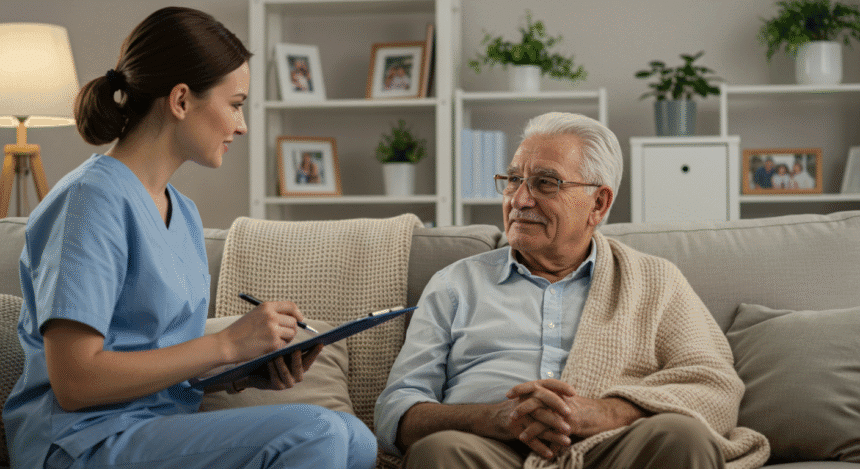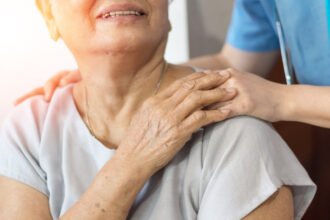Since Ryan took over Healthworks Collective we have been committed to exploring how aging affects personal health and mobility, especially for older adults who want to stay in their homes. You are not alone if you’ve noticed that everyday tasks become harder with age.
There are growing concerns about how aging impacts physical independence. You may be surprised to learn that nearly 93% of adults 65 and older have at least one chronic condition, while nearly 79% live with two or more, according to the National Council on Aging. It is no longer unusual for aging to bring multiple long-term health challenges. Keep reading to learn more.
Why Mobility Solutions Matter at Home
You are living in a time where the aging population is growing rapidly. A report from the US Census shows that the number of Americans aged 65 and older grew by 38.6% from 2010 to 2020, reaching 55.8 million—the fastest increase since 1880 to 1890. There are growing demands on healthcare systems and housing solutions because of this demographic shift.
It is becoming harder for older adults to stay mobile as they age. A study by Ellen Freiberger at the Institute for Biomedicine of Aging in Germany found that mobility limitations affect 35% of people aged 70 and the majority of those over 85. You may be surprised by how common it is for older adults to struggle with movement even within their own homes. You might not realize how many people lose mobility before they lose independence in other areas.
There are many definitions of what it means to age in good health, but mobility plays a central role. A study by the World Health Organization shared by Freiberger defines healthy aging as “the process of developing and maintaining the functional ability that enables wellbeing in older age.” You should pay attention to mobility loss, as it often leads to further health problems. It is not just about walking but being able to move confidently, safely, and independently at home.
You may not think about in-home support until a fall or hospitalization occurs, but early solutions can prevent these issues. There are tools and services that allow older adults to keep moving safely where they live. You can improve your quality of life by making small adjustments to the home before mobility declines. It is worth exploring these options while independence is still intact.
You should not wait for a crisis to take steps toward safer living. There are many simple changes—such as grab bars, ramps, or home care visits—that reduce risk and improve everyday comfort. It is easier to adapt gradually than to recover from a fall or injury. You might be surprised by how much confidence you can gain by making these changes early.
As America’s population ages, the concept of “aging in place” has become more than a trend — it’s a necessity. For millions of seniors, staying in their own homes rather than relocating to care facilities isn’t just a financial decision — it’s about autonomy, dignity, and comfort. But to make this possible, one crucial factor must be addressed: mobility within the home.
The Rising Demand for In-Home Mobility Support
According to the U.S. Census Bureau, the number of Americans aged 65 and older will double over the next 30 years. At the same time, chronic health conditions such as arthritis, stroke, and Parkinson’s disease are limiting physical mobility earlier in life.
In homes with multiple floors, stairs can quickly become an insurmountable obstacle. This can lead to serious risks: falls, isolation, and ultimately, premature relocation to assisted living. That’s why mobility-enhancing home modifications — such as stairlifts — are becoming essential to safe aging at home.
What Makes a Home “Mobility-Friendly”?
Creating a home environment that supports aging in place involves a few key design principles:
- Zero-step entries and wide doorways
- Non-slip flooring and good lighting
- Accessible bathrooms
- And, critically: safe and easy navigation between floors
Stairlifts are among the most effective tools in this category. They enable independent vertical mobility without structural overhauls, offering an immediate and safe solution.
“In places like New York City, where many homes are multi-story and elevators are rare, stairlifts provide not just convenience but freedom,” says a mobility specialist from StairlifterUSA in New York. “Our clients consistently tell us it’s the best investment they’ve made for their health and peace of mind.”
The Link Between Mobility and Mental Health
Research increasingly shows that maintaining mobility doesn’t just improve physical health — it has a direct impact on mental well-being. A 2022 study found that seniors with greater mobility reported significantly lower levels of anxiety and depression.
Being able to move freely through one’s home encourages physical activity, social interaction, and a sense of normalcy. Stairlifts, grab bars, and other tools aren’t just “convenience features” — they’re part of a larger wellness strategy.
Overcoming the Stigma of Assistive Technology
Unfortunately, many older adults resist mobility aids due to pride or fear of appearing “old.” But as health professionals continue to advocate, the narrative is shifting.
These solutions should be viewed like eyeglasses: a tool to enhance life, not a sign of weakness. With sleek designs and quiet operation, modern stairlifts are subtle, stylish, and reliable — and their presence can even increase a home’s long-term value.
Conclusion: A Small Change With Big Impact
Investing in home mobility solutions, especially stairlifts, can dramatically extend the time seniors can live safely and happily in their own homes. It’s not just about avoiding stairs — it’s about reclaiming independence, preventing injury, and improving quality of life.
As one expert put it: “Mobility is freedom — and freedom starts at home.”
There are more ways than ever to support aging in place, but many people still feel unsure about how to begin. You might think in-home support is only for those with severe disabilities, but even small tools can make a big difference.
You can take action now to protect your independence for the future. There are resources available to guide your decisions and help you stay safe and confident at home. You deserve to live with dignity and mobility at every age.








